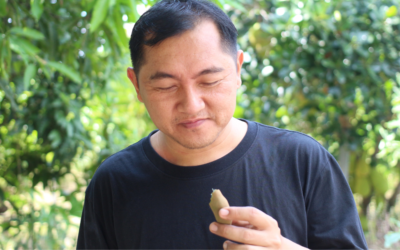When you’re on you’re way to a full scale anxiety attack, it can feel impossible to turn it around. Trust me, I’ve been there. Even with all my knowledge as a psychologist it has been hard for me to cope when I’m having one. But I’ve finally discovered a way that works, every time. The hard part is remembering to do it, and having faith to persist with the knowledge it will work.
Here it is…
- GROUND. Sit. Feel each part of your body. Wiggle your toes in your shoes. Gently squeeze your calves and thighs (internally or with your hands). Squeeze your arms. Feel your fingers. Now get a sense of all of your body sitting there.
This step is to ground you in your body. When we experience anxiety we dissociate…. anxiety is our mind’s way of saying, ‘This is too much! I can’t cope!’ When we feel like there is no escape to our situation (we can’t fight back and we can’t run away) then dissociation feels like the minds only option, which means basically, we start to detach from our body, our mind starts to try and escape. You can literally feel this, the sensation from your limbs starts to disappear and all the energy goes to your vital organs. This step helps us reverse this. We are saying ‘I can cope, I’m going to bring the sensation back to my limbs, I can do something about this’. - TIME. Set your timer for 5 minutes. Longer is ok, but 5 minutes is the minimum.
- BREATHE. Put your hand on your belly, and focus on the breath coming from there. If you’re stuck, imagine blowing out a birthday candle -that will make your breath come from the right place. Now breathe in for a count of 3 to 4, and out for a count of 3 to 4. Make sure the in and out breaths are even. It may be hard at first to get the breaths that long and deep enough, that’s expected and completely fine, just keep trying.
When we are anxious, our breaths are shallow (in the chest) and quick. This step helps revers the physiological state of anxiety. Every time you take a breath, you are telling (tricking) your body and self “I am safe”. - MOVE. This step is often missed in other methods, but it’s so important and effective. How does your body need to move right now? I often sit cross legged and jiggle my hips from side to side for the 5 minutes. It doesn’t matter how you move, just move. If you can’t manage much, grab something and fidget with your fingers. Get up and make big movements if that feels right.
Anxiety happens because whatever is making us anxious, is triggering something that happened to us in early childhood or something more recent that was traumatic. This something is always an event where we couldn’t fight or run (take flight) so we just had to sit and endure. We weren’t able to act in the way our body wanted to, our action was blocked. That is why movement is the key. We are letting our body to what it was not able to do during the original trauma or upset.
When it doesn’t work
- When it doesn’t work, I usually find I haven’t followed the above steps properly -easy to do when you’re anxious.
- Make sure you have grounded yourself.
- Make sure you’re breathing in and out, deeply and slowly.
- Make sure you are moving, even if in a small way.
All of this, by the way, is called regulating. We’re expanding our window of tolerance…we’re telling ourselves, I can cope.
Regulating may not be enough long term. You will typically need counselling as well, which will help you process the original upset. But regulating will make a huge difference in feeling like you can manage your anxiety.
Read more
Take the First Step Towards Healing
If you're struggling with complex trauma, don't face it alone. Contact me today and start your journey to trauma recovery.
The Complexity of Loving Someone Who Hurt You
When we are kids, we should grow up within an atmosphere of love and safety. But when someone who is supposed to love you also causes you harm, you can become an adult who has a confusing mix of love, anger and longing towards that person. Resolving these conflicted...
How to Handle Tricky Family Christmas Events
If you are one of those people where Christmas time with family does not conjure scenes of warm smiles, hugs and the warm fuzzies, or if you feel obligated to attend events where your boundaries might be ignored, you don’t feel welcomed or respected, or you just feel...
Feeling triggered and can’t come back? Try my favourite techniques
Have you ever felt like there’s no way back once you’re triggered? It can definitely feel like nothing will bring you back except time or your next therapy session. I’ve been there too. Here are some of my favourite ways to come back from being triggered: 1) Grab an...




